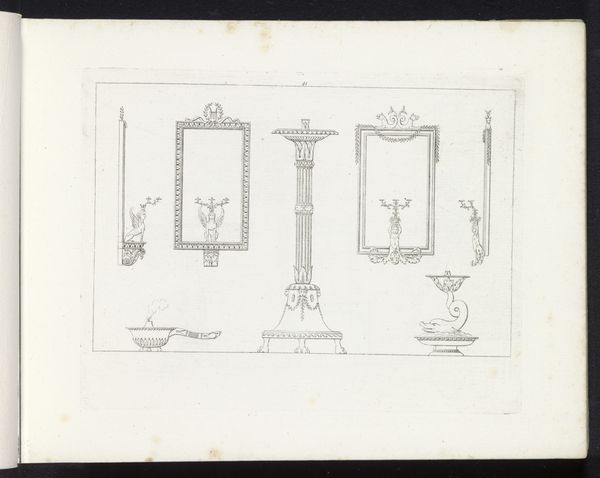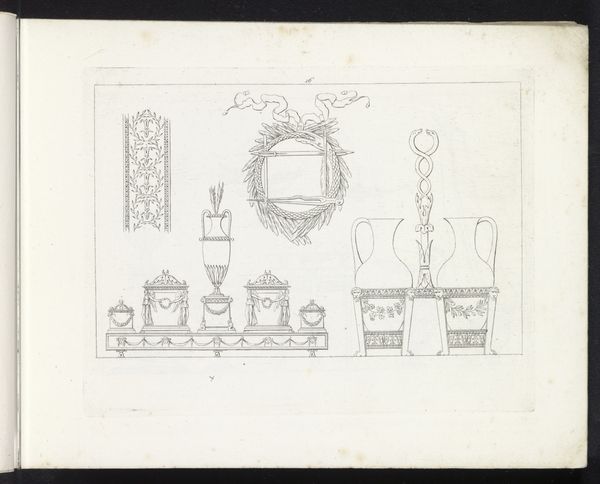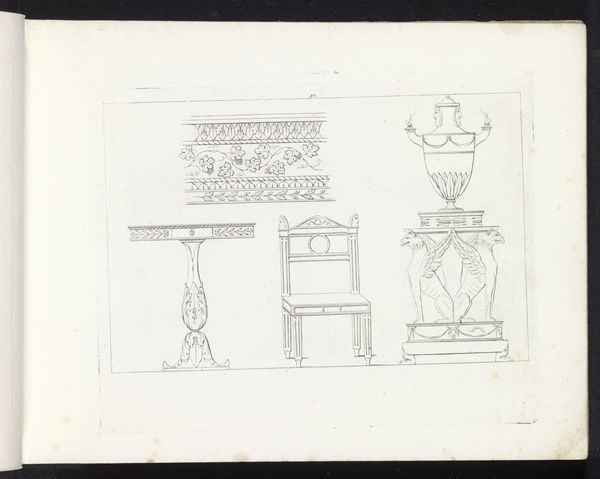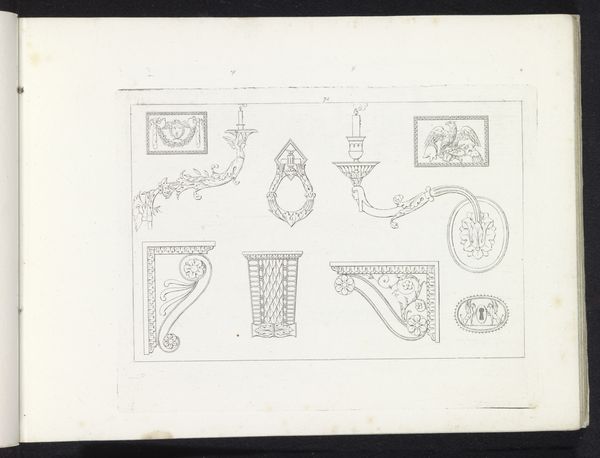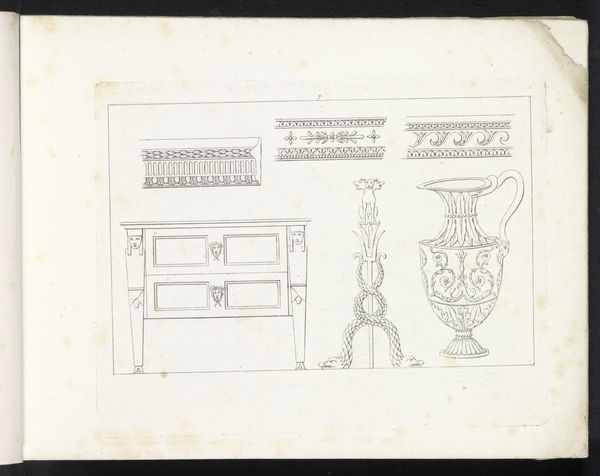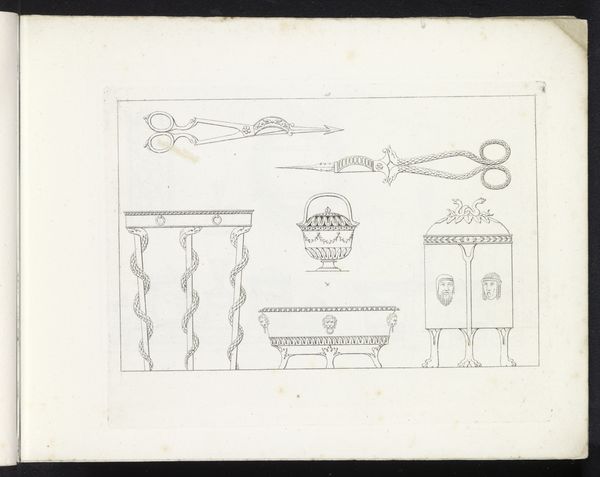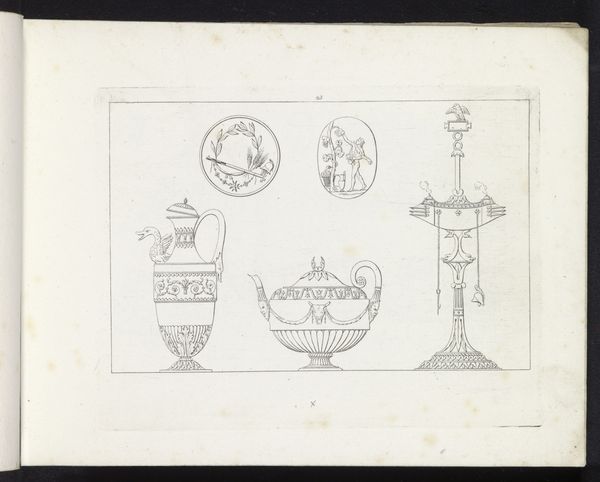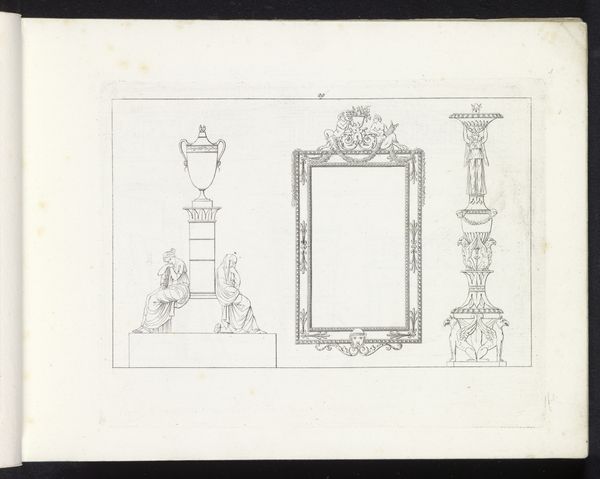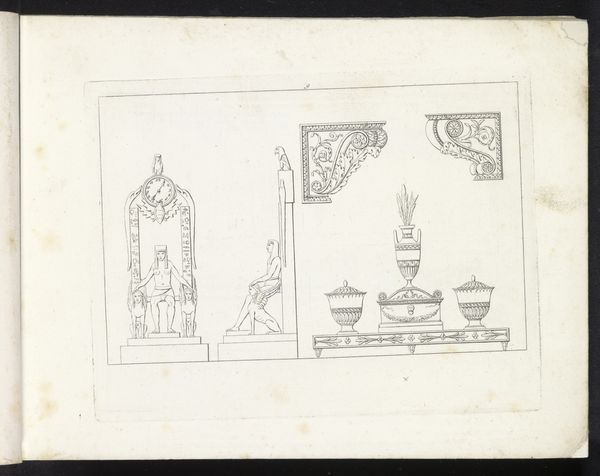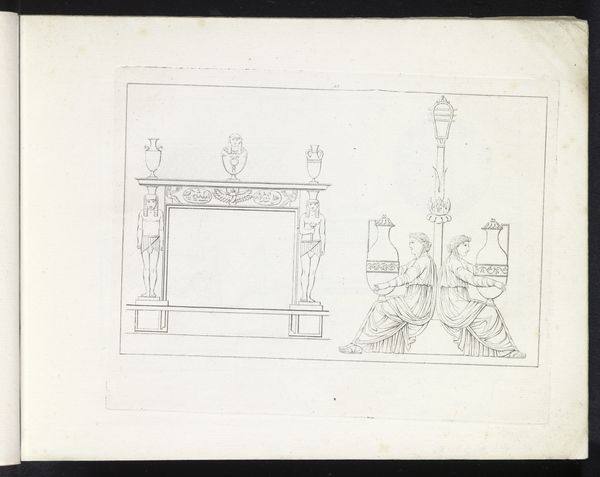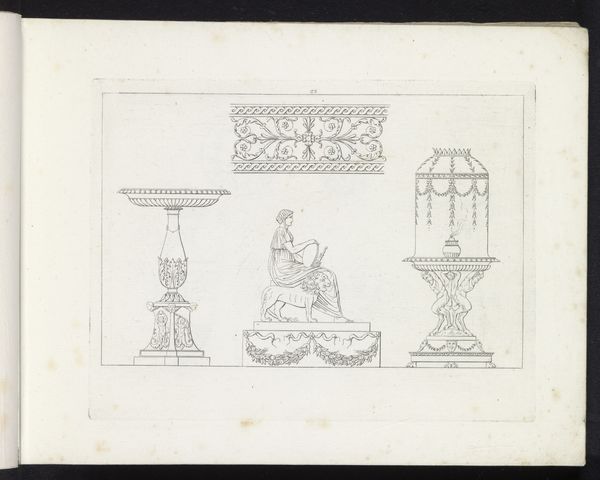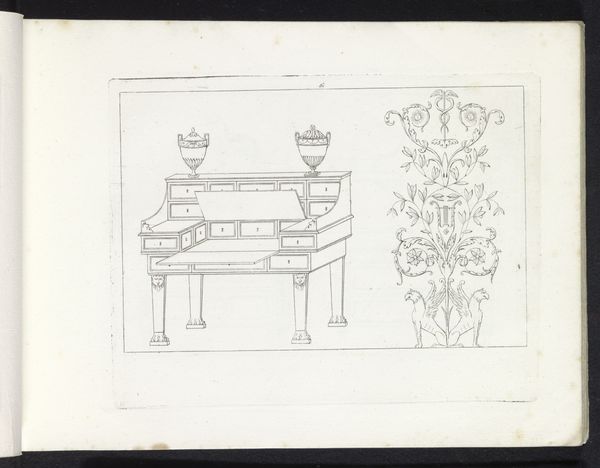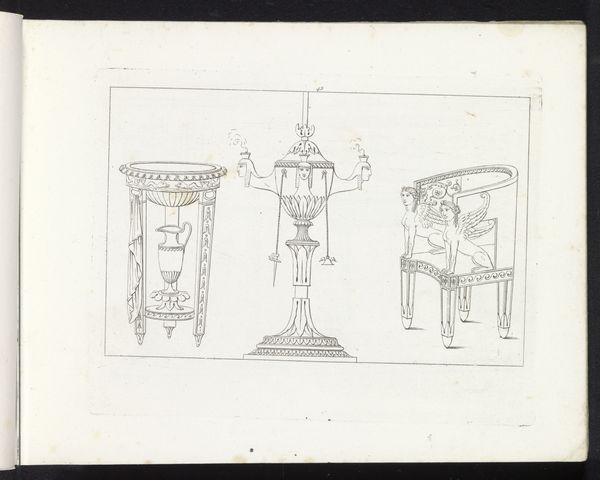
drawing, ink, pen
#
drawing
#
neoclacissism
#
pen sketch
#
figuration
#
ink
#
pen
#
history-painting
Dimensions: height 161 mm, width 215 mm
Copyright: Rijks Museum: Open Domain
Curator: This pen and ink drawing, crafted by Pietro Ruga in 1817, offers a glimpse into neoclassical design sensibilities. Titled 'Lijst, kandelaar en een vaas met een verbeelding van de Heilige Drie-eenheid'—that’s 'Frame, candlestick, and a vase with an image of the Holy Trinity'—it presents a composition of precisely rendered objects. Editor: My immediate impression is one of coolness and calculated order. The drawing's linear precision and monochromatic palette create a sense of detachment, a studied elegance typical of the Neoclassical. Curator: The starkness definitely aligns with the movement's emphasis on reason and order, but it’s important to consider the labour and socio-political context. Objects such as these signified elite taste and power and played into how such elites built their wealth. Editor: True, but the forms themselves speak volumes. Observe how each element—the frame, the candlestick, the vase—is meticulously delineated. The careful use of line to define shape, to suggest volume, it's a dance of pure form and light. Note the details like the roped frame edge or the stacked heads topping the candelabra, such calculated symmetry, but where was it intended for? Curator: Likely designs for interior decoration, maybe a church needing new adornments. Understanding the material production of such objects, their crafting, also gives us insight into social stratification and class. Artisans would have skillfully executed these designs. Editor: You can almost feel the artist's hand moving across the paper. It seems Ruga attempts to emulate sculptural solidity with a graphic means, a translation of form across mediums, though there are obvious flatness from certain perspective. It's a visual paradox and how the final object plays in social dynamic would have a strong implication for those consuming it at that time. Curator: Indeed, by paying attention to those details and broader socio-economic influences of production, we gain insights into the values circulating around artwork during its time of creation. Editor: It is also an art for art's sake, because there's the artistic creation in translating 3D form into 2D for a certain patronage and marketability which makes all the elements have to work formally as well as within a context of consumerism at the time. It’s fascinating.
Comments
No comments
Be the first to comment and join the conversation on the ultimate creative platform.
